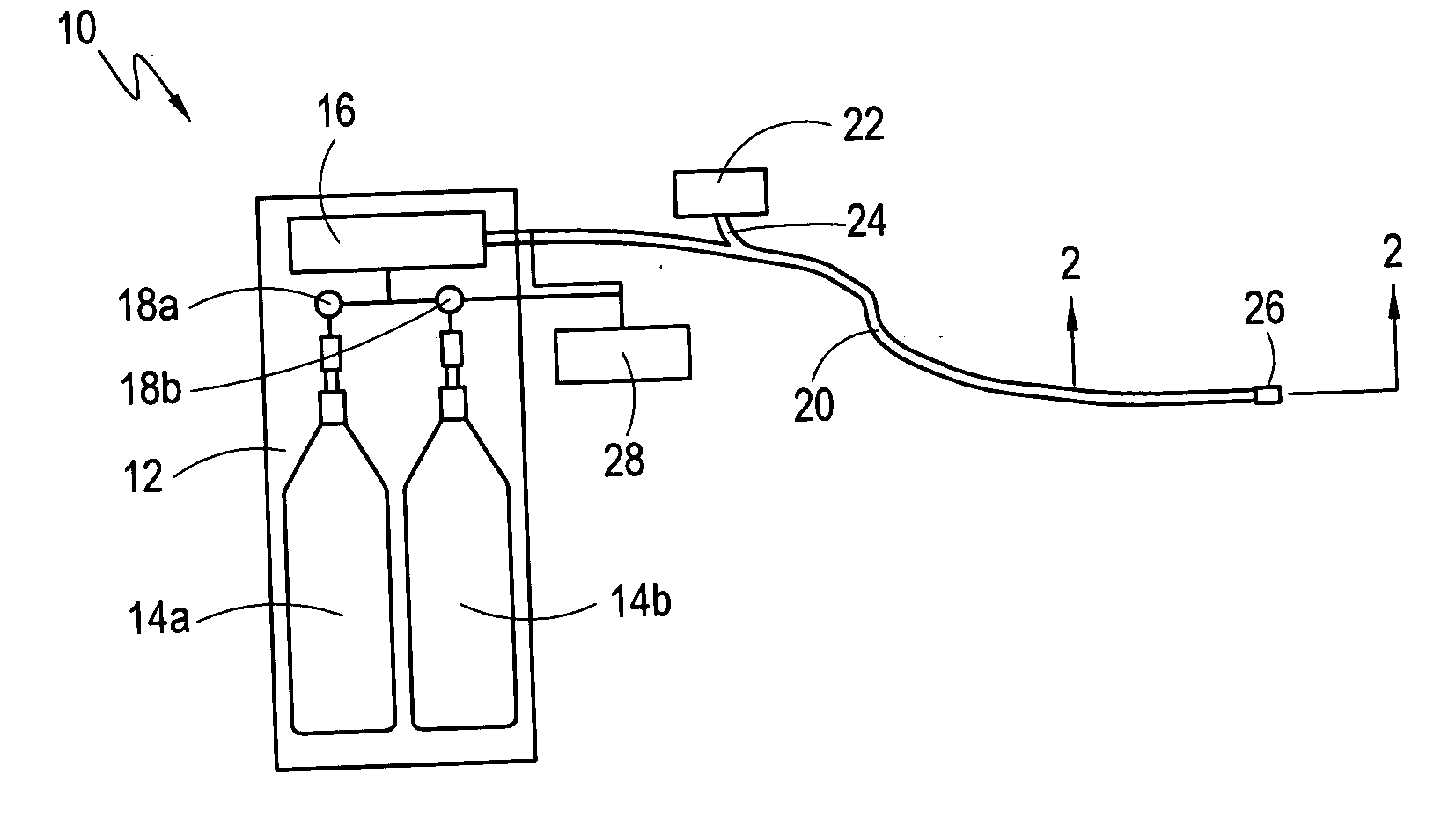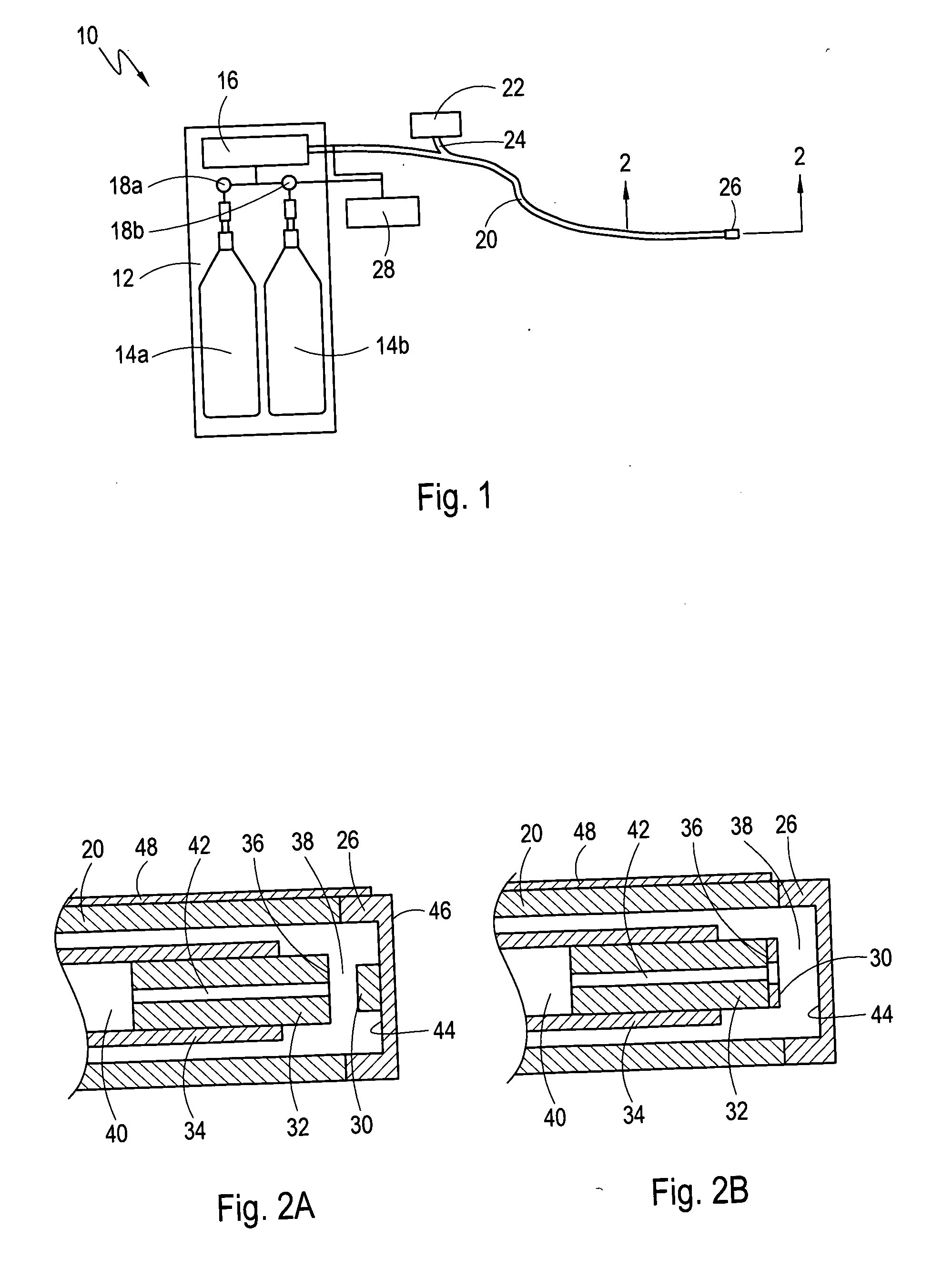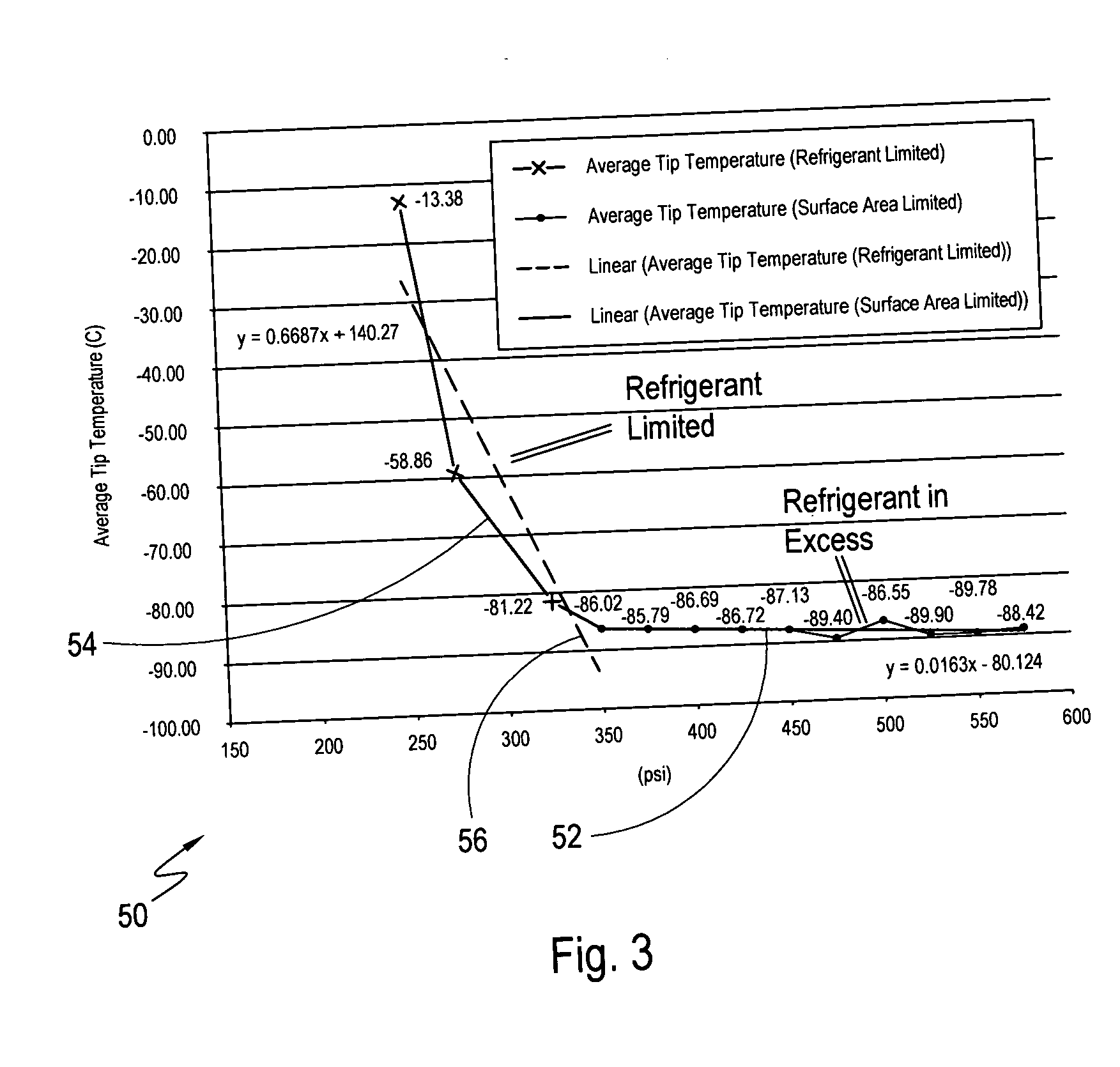Pressure-temperature control for a cryoablation catheter system
a technology of cryoablation and temperature control, which is applied in the direction of catheters, domestic cooling devices, container discharge methods, etc., can solve the problems of reducing the efficiency of cryoablation, serious safety concerns, and unable to produce the larger lesions needed, so as to achieve greater resistance, facilitate the effect of achieving the effect of ablation and greater pressure drop
- Summary
- Abstract
- Description
- Claims
- Application Information
AI Technical Summary
Benefits of technology
Problems solved by technology
Method used
Image
Examples
Embodiment Construction
[0018] A system in accordance with the present invention is shown in FIG. 1 and is generally designated 10. In detail, the system 10 includes a console 12, inside of which are mounted two fluid refrigerant sources 14a and 14b. The fluid refrigerant sources 14a and 14b shown in FIG. 1 are, however, only exemplary. As contemplated for the present invention, the fluid refrigerant sources 14a and 14b may be any type pressure vessel known in the pertinent art that is suitable for holding and subsequently dispensing a fluid under relatively high pressures (e.g. 700 psi). Positioned between the fluid refrigerant sources 14a and 14b and a pre-cooler 16, are pressure regulators 18a and 18b. In operation, fluid refrigerant flows out of the fluid refrigerant sources 14a and 14b, through the pressure regulators 18a and 18b, and into the pre-cooler 16, where it is cooled. For the purposes of the present invention, the preferred fluid refrigerant is nitrous oxide (N2O).
[0019] Still referring to ...
PUM
 Login to View More
Login to View More Abstract
Description
Claims
Application Information
 Login to View More
Login to View More - R&D
- Intellectual Property
- Life Sciences
- Materials
- Tech Scout
- Unparalleled Data Quality
- Higher Quality Content
- 60% Fewer Hallucinations
Browse by: Latest US Patents, China's latest patents, Technical Efficacy Thesaurus, Application Domain, Technology Topic, Popular Technical Reports.
© 2025 PatSnap. All rights reserved.Legal|Privacy policy|Modern Slavery Act Transparency Statement|Sitemap|About US| Contact US: help@patsnap.com



